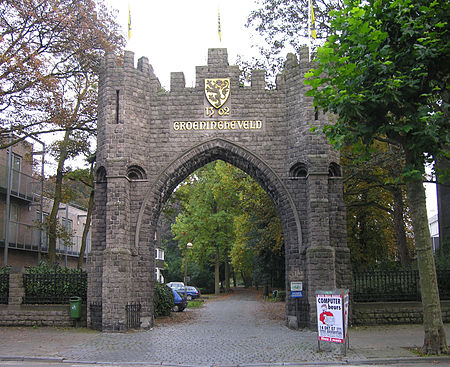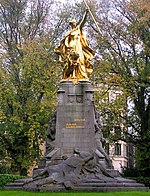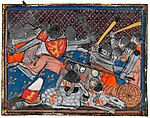Groeningepoort
Belgian building and structure stubsBuildings and structures in KortrijkGates in BelgiumHistory of KortrijkMonuments and memorials in Belgium ... and 1 more
Tourist attractions in West Flanders

The Groeningepoort is a monument in the Belgian city of Kortrijk. The triumphal arch was built to commemorate the 600th anniversary of the Battle of the Golden Spurs and gives access to the Groeningepark, where during the Middle Ages the Groeninge battlefield was situated. In this park you can also find the golden Groeninge Monument. The Groeningepoort was erected in 1908 and has the inscription 1302 – Groeningheveld.
Excerpt from the Wikipedia article Groeningepoort (License: CC BY-SA 3.0, Authors, Images).Groeningepoort
Groeningepoort, Kortrijk
Geographical coordinates (GPS) Address Nearby Places Show on map
Geographical coordinates (GPS)
| Latitude | Longitude |
|---|---|
| N 50.8292 ° | E 3.2735 ° |
Address
Groeningepoort
Groeningepoort
8500 Kortrijk (Kortrijk)
West Flanders, Belgium
Open on Google Maps









